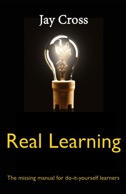 Zero to One: Notes on Startups, or How to Build the Future Peter Thiel, Blake Masters
Zero to One: Notes on Startups, or How to Build the Future Peter Thiel, Blake Masters
Peter Thiel’s Zero to One claims to be about startups, but that is too narrow a view of its value. Thiel explores the challenges of creating the risky new in an environment that prefers safe repetition. Startups are the favored example in today’s entrepreneurial environment, but we can all benefit if organizations learn to actually do the innovation they profess in their PR.
Zero to One is a book that bears rereading; there are insights throughout that are crisply expressed and presume that the reader is willing to think. I was hooked early on with this observation in the preface:
The single most powerful pattern I have noticed is that successful people find value in unexpected places, and they do this by thinking about business from first principles instead of formulas.
One of the values of the book is the focus on the difference between creating something new—going from zero to 1—and imitating or scaling an idea after it has been dreamt up. The U.S. is probably better than almost anywhere else at rewarding true innovation, yet most of us prefer the safety of copying someone else’s success.
One of the arguments Thiel develops is teasing apart whether we are optimistic or pessimistic about the future from our views about whether that future is “definite†or “indefinite.†Can we control what emerges tomorrow by what we do today? Or, are we at the mercy of a random and unknowable future? There’s an important insight here about striking a good (as opposed to the “rightâ€) balance between having a definite perspective and adapting to new information as it becomes available. It isn’t a binary choice; like all important leadership challenges it’s about balance and perspective.
There is value in nearly every section of this book. Here, for example, is a list of seven questions that let you evaluate an idea for its entrepreneurial potential:
- The Engineering Question: Can you create breakthrough technology instead of incremental improvements?
- The Timing Question: Is now the right time to start your particular business?
- The Monopoly Question: Are you starting with a big share of a small market?
- The People Question: Do you have the right team?
- The Distribution Question: Do you have a way to not just create but deliver your product?
- The Durability Question: Will your market position be defensible 10 and 20 years into the future?
- The Secret Question: Have you identified a unique opportunity that others don’t see?
Elsewhere, you will benefit from Thiel’s musings on why you would just as soon avoid competition and opportunities to disrupt existing markets. Throughout Zero to One, Thiel hammers and chips at why the rules for going from one to many, which dominate conventional MBA programs and wisdom, are, at best, irrelevant and, more likely, misleading if you focus instead on creating something new.
If you’ve managed to create a billion dollars of value, you’re pretty much guaranteed a book contract. Whether you have anything useful to share in that book is a separate question. Thiel’s value creation skills extend to intellectual as well as financial capital. He’s clearly reflected on his experiences in a systematic way and we benefit.


